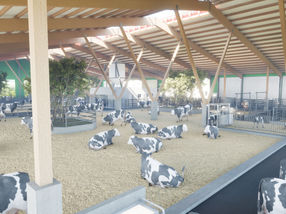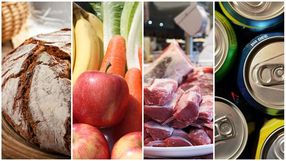Eating behaviour yesterday and today
Advertisement
What is traditional and modern eating behaviour? This question is being investigated in a transnational study at the Department of Psychology at the University of Constance. Under the direction of the health psychologist Dr. Gudrun Sproesser and with the support of the German Research Foundation (DFG), a combination of a literature study and a cooperation of working groups in ten countries has brought together facets of what constitutes traditional and modern eating. The conclusion is that this is a multidimensional concept. It doesn't just depend on the ingredients, i.e. the "what", when eating. The traditional and modern way of eating also differs in the way it is eaten. The results can be found in the current issue of the Open Access journal BMC Public Health.
In recent years there has been a worldwide change in people's eating habits. This phenomenon, known in the literature as "Nutrition Transition", involves a shift away from high consumption of cereals, fruit and vegetables towards animal products, fats, oils and sugars. The present study also found that traditional and modern food is also characterised by processing and preparation: Is it highly processed food or is it prepared more like "grandmother's" way?
But there is not enough to distinguish traditional from modern food consumption: "We soon saw that what constitutes traditional and modern eating behaviour is much more extensive than the facets of the ingredients or food groups. It also plays a role how people eat," says Gudrun Sproesser, a researcher in the Department of Psychology.
In the how category, for example, modern snacks and traditional main meals are juxtaposed with traditional home meals and modern meals in the restaurant. The esteem for food also belongs here: today, less is being lifted, there is more waste. If you traditionally pay more attention to getting full, modern eating habits tend to count calories. The social aspect provides additional distinguishing features: Whereas in the past family meals were taken more often, today people increasingly eat alone.
For a comprehensive concept, relevant literature was thinned until the 1970s. This global literature review was supplemented by discussions with the project partners from the ten countries Ghana, India, China, Brazil, Mexico, Japan, France, Turkey, the USA and Germany. The working groups brought together a total of 106 facets that distinguish traditional from modern eating behaviour.
It has been shown that it is not possible to evaluate traditional or modern eating behaviour as a whole. "You have to deal with the individual facets," says Gudrun Sproesser. For example, relationships between highly processed foods and overweight can be identified. But: "Modern eating habits are very diverse, you can't say it's bad in general," says the health psychologist. In addition, the division of what constitutes traditional and modern eating habits is dependent on time, place, culture and society. In Japan, for example, sushi is part of traditional eating habits, in Germany it is part of modern eating habits. In Asia, the consumption of dairy products is considered modern, in Germany traditional.
The trend back to traditional eating habits, such as eating regionally and seasonally against the background of sustainability, which can also be seen in Germany, is incidentally attributed to postmodern eating habits. "But the figures show that this is not the majority," says Gudrun Sproesser.
For the future, the health psychologist sees the task of investigating the connections between the individual facets and health aspects.
Note: This article has been translated using a computer system without human intervention. LUMITOS offers these automatic translations to present a wider range of current news. Since this article has been translated with automatic translation, it is possible that it contains errors in vocabulary, syntax or grammar. The original article in German can be found here.

































































